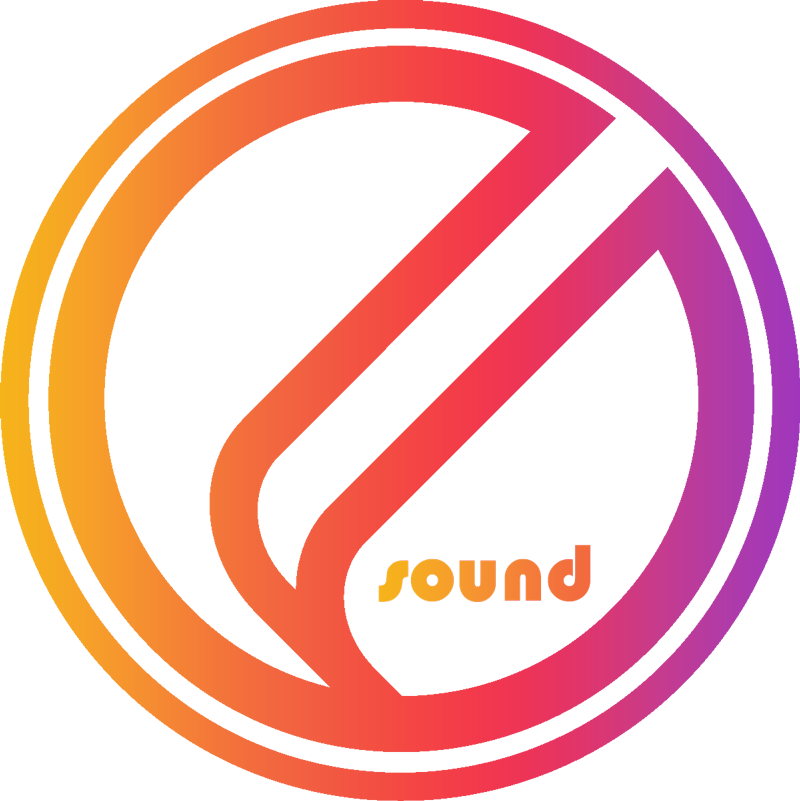Brewed to Perfection: Mixing the Barista Challenge
In June 2025, the exceptional team at Hermosillo Video Engineering invited me to mix a high-profile project at the Mandalay Bay Convention Center in Las Vegas.
Though it had some familiar keynote elements, this event’s main attraction was anything but typical — a full-blown Barista Challenge.
“Ummmm… okaaaay? What exactly is a Barista Challenge?” was my first reaction.
Turns out, it’s an international, coffee-competition-meets-sports-broadcast showdown — staged in the round for 5,000 enthusiastic attendees armed with noisemakers and caffeine-fueled energy. Picture boxing-ring hosts, hyped-up commentators, and live translators for non-English-speaking contestants, both in-house and on the broadcast feed.
Noooooo problem… right?
⸻
Brewing the System Design
RRS Audio Productions out of Las Vegas handled audio support, and the system design was crafted by the very capable Alex Barnato. The rig was a robust serving of L-Acoustics, including:
•8 arrays of 3-deep A15s with 4 flown arrays of 2-deep KS21s for mains
•16 arrays of 4-deep Kiva2s for the outer delay ring
•5xts for front fill
•Flown X12s for stage foldback
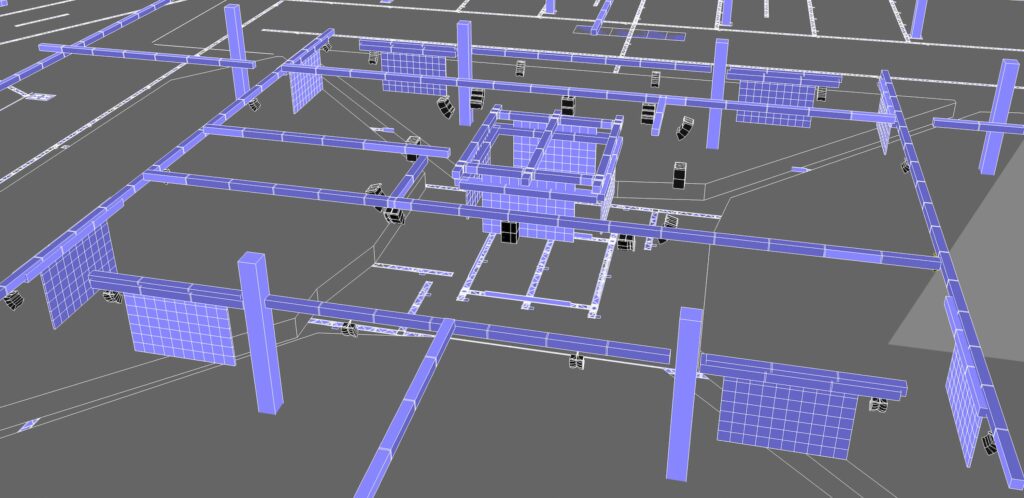
Soundvision rendering, Mandalay Bay
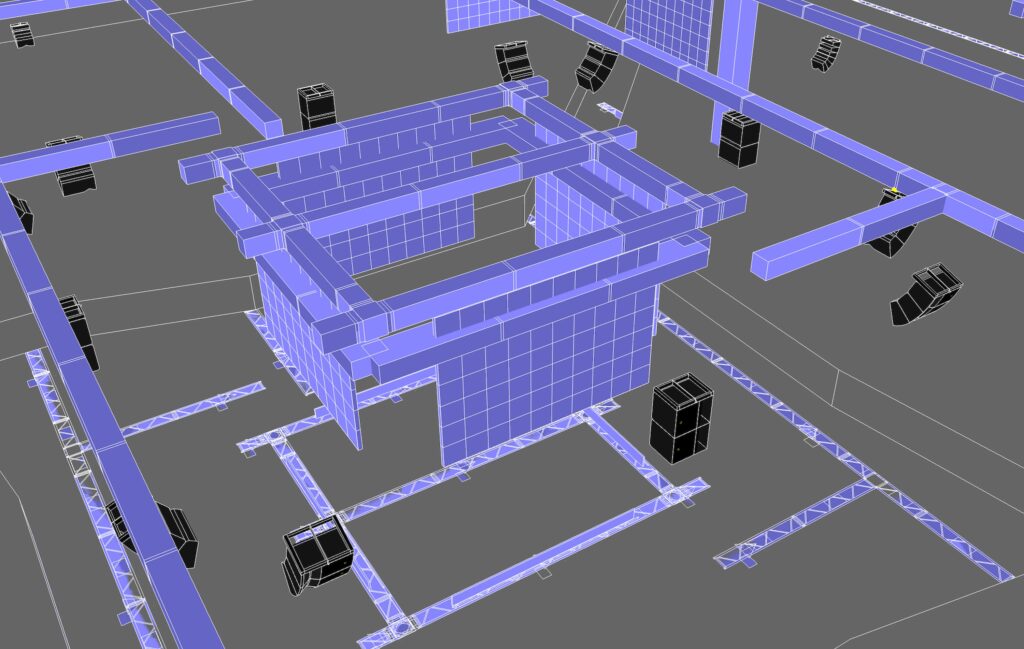
Soundvision rendering, Mandalay Bay
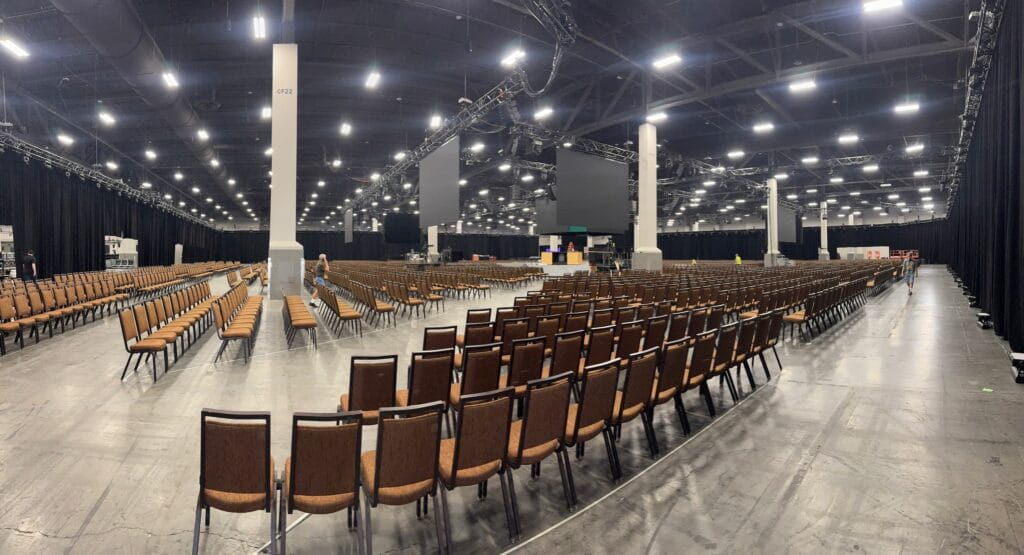
Setup, Mandalay Bay
Control was split between two Yamaha Rivages — a PM5 for me at FOH
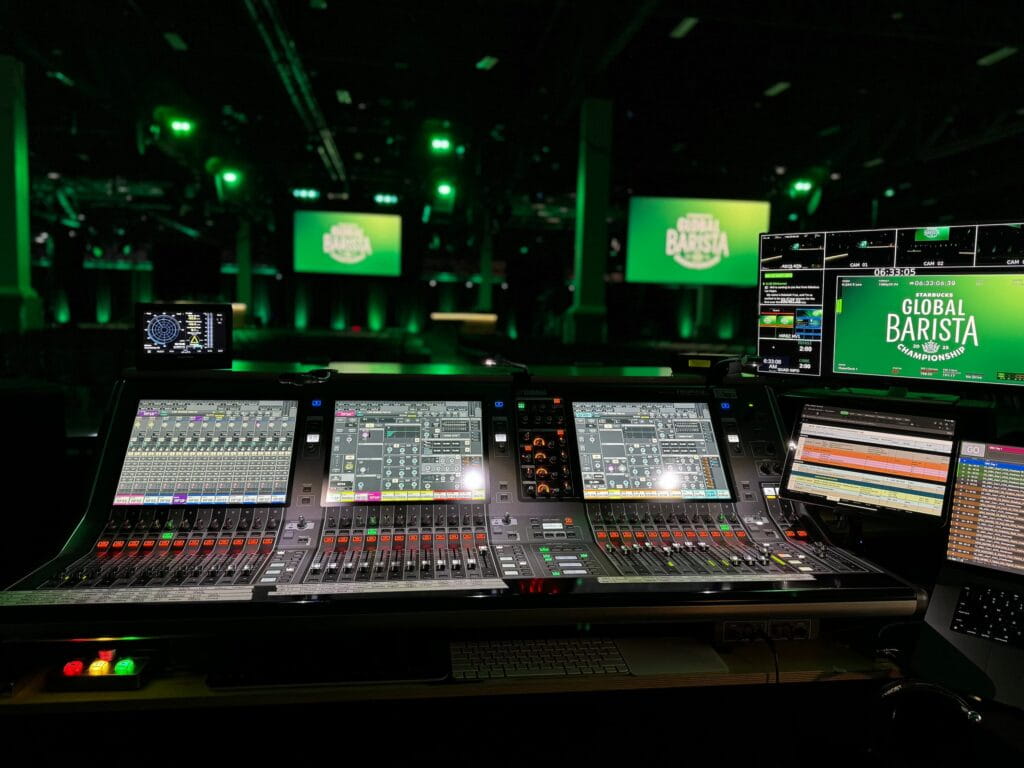
FOH view, Mandalay Bay
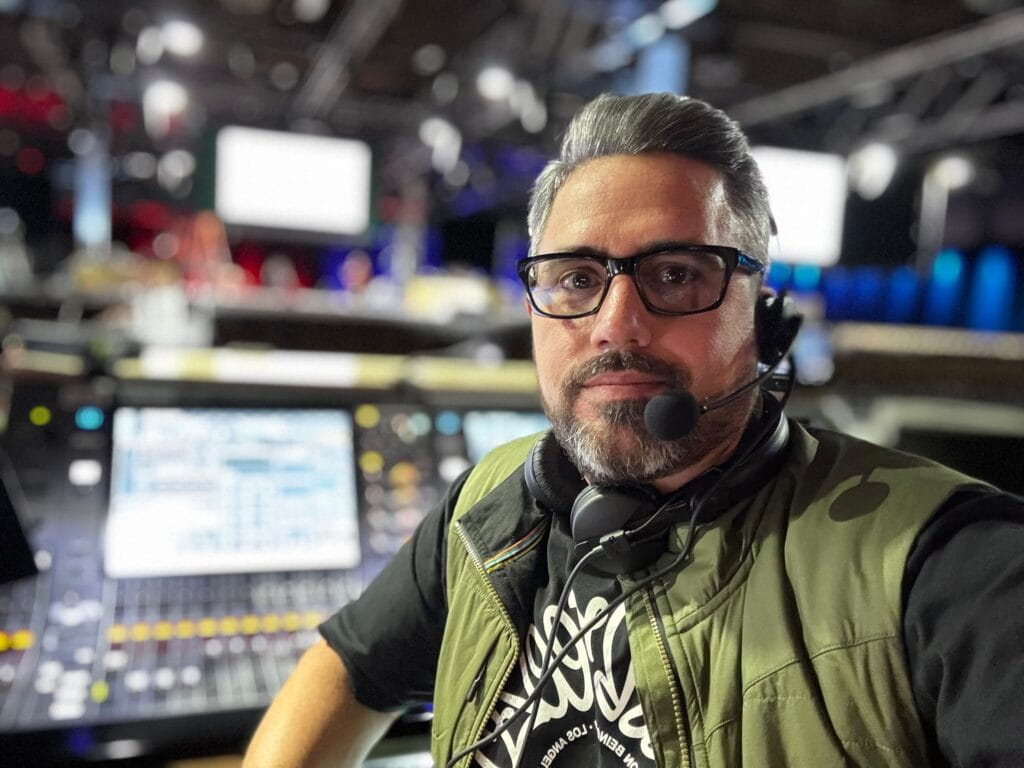
Brian Frost, FOH Engineer
and a PM7 backstage for broadcast and IFBs, run by modern-day bohemian Zach Larsen.
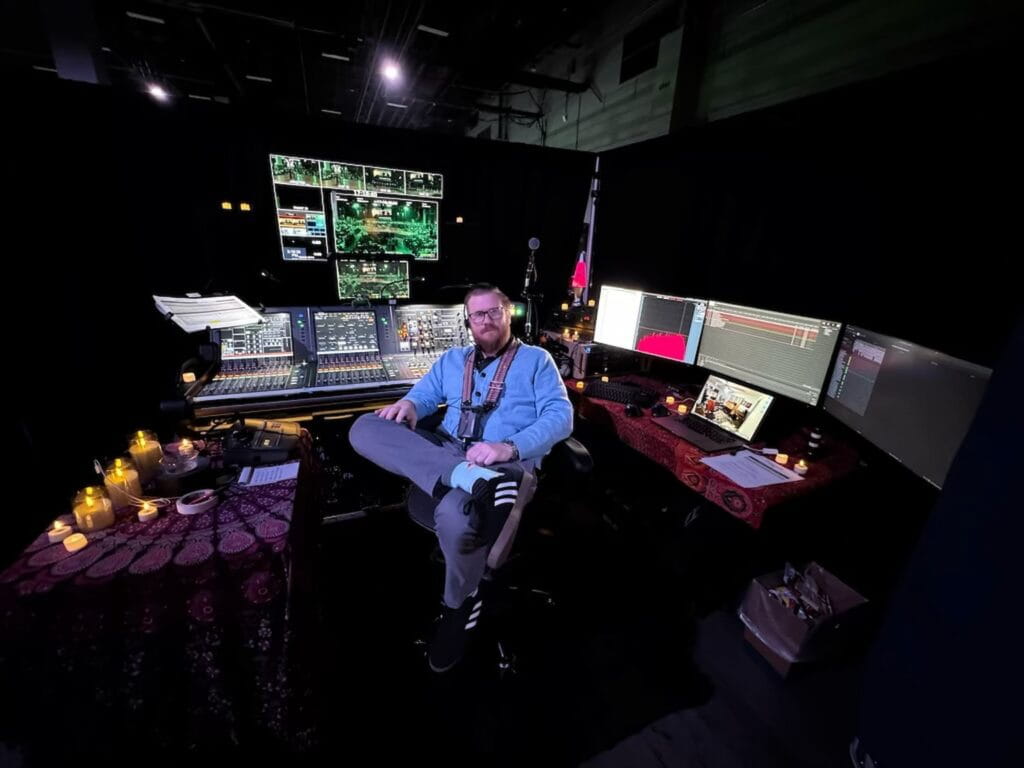
Zach Larsen, Broadcast Engineer
I also brought in my good buddy Brent Dunn from DSP Live as my right-hand man behind the drape.
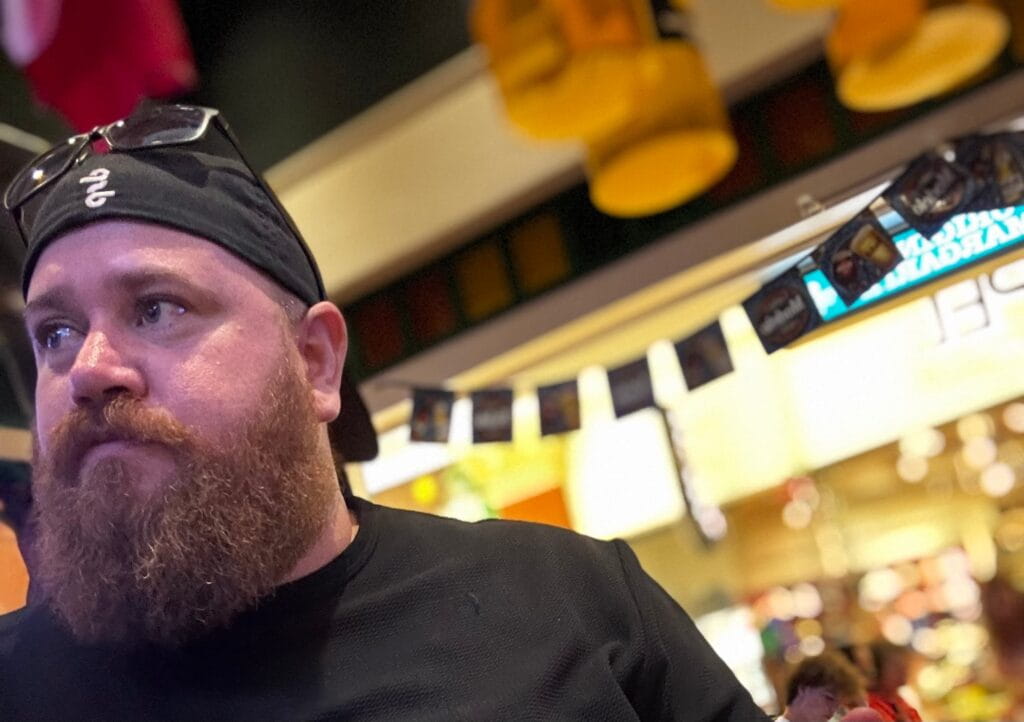
Brent Dunn, Dante Systems & A2
With the crew assembled like Voltron, we were ready to tame 24 channels of Axient Digital wireless and 16 channels of Axient Digital PSMs inside a concrete convention-center beast.
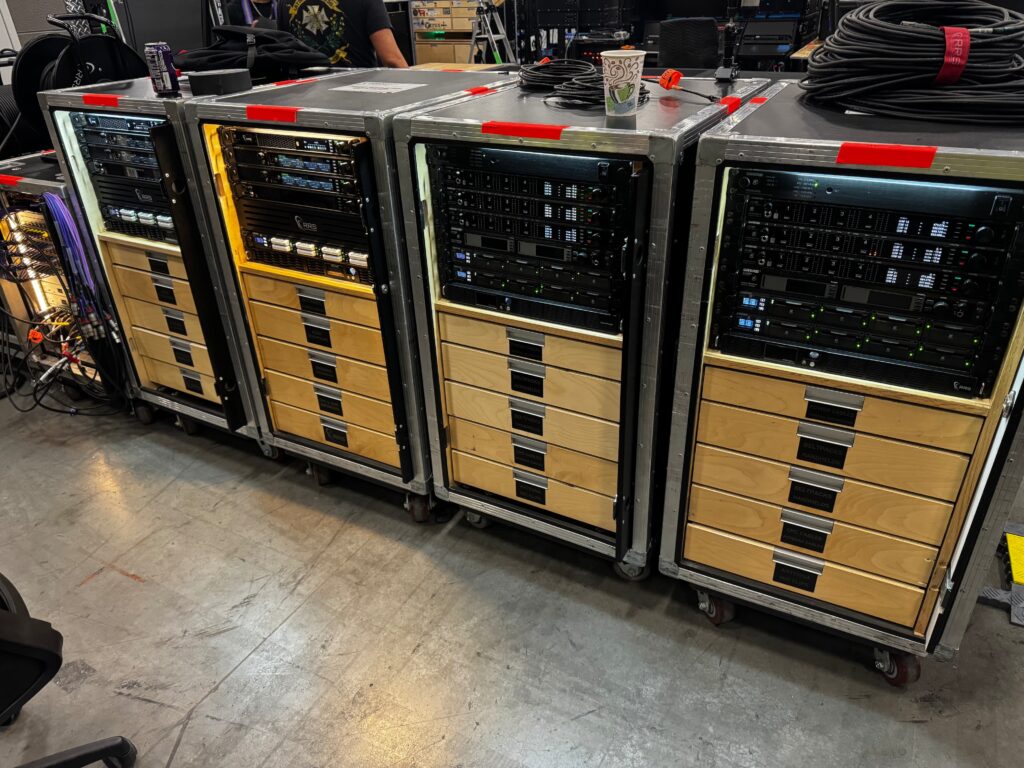
RSS Shure racks
⸻
24 Channels of Caffeine and Energy
The show was a nonstop rotation of contestants, hosts, judges, and translators — all wired with black DPA 6066 headsets and IFBs.
Hosts introduced the dueling baristas, who competed in challenges like best foam art or most flavorful cappuccino. Boundary mics captured the hiss of espresso machines and the crowd’s roar — all adding texture to the live mix.
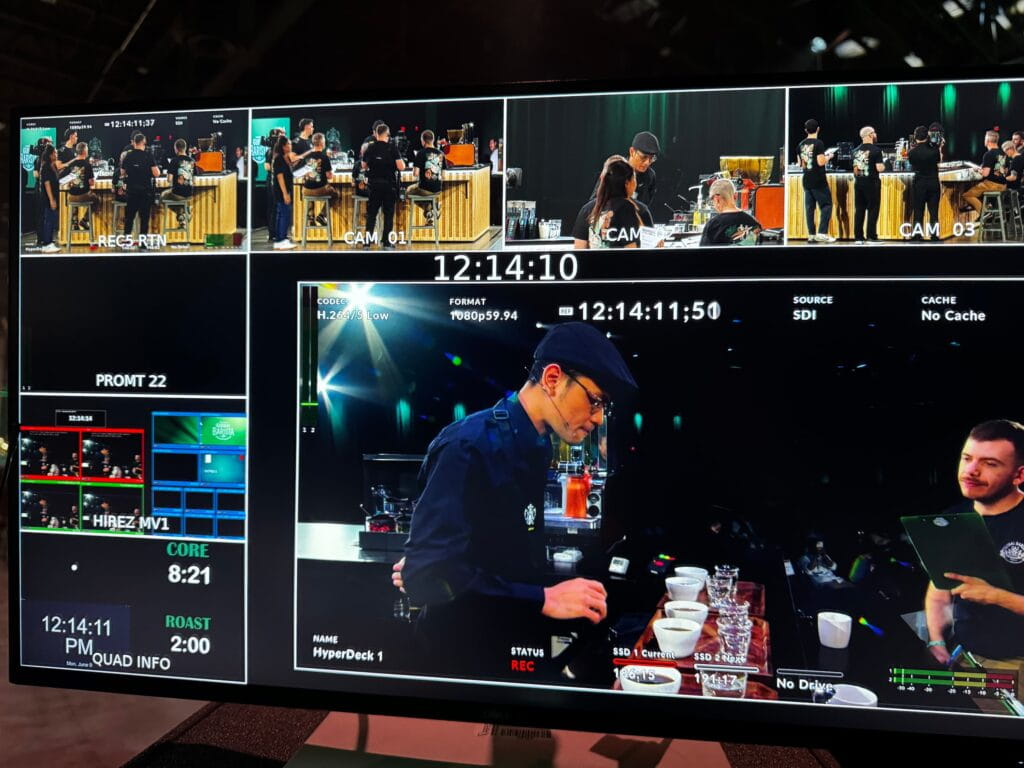
Barista challenge multi-view
After each round, hosts interviewed the baristas. Because many competitors didn’t speak English, each had an on-stage translator, both mic’d and fitted with IFBs so they could hear one another clearly over the noise. During this time, the judges would also jump in with questions of their own, offering feedback on presentation, technique, and taste before reporting their scores — explaining to the audience why each drink earned its mark.
Routing the ears mix — expertly handled by Zach Larsen on top of maintaining the broadcast mix — was a careful balancing act:
•Translators needed host, barista, judges, and audience Q&A in their mix.
•Baristas needed only their translator.
Meanwhile, the producers required smooth, broadcast-style auto-ducking — allowing the Korean barista to rise naturally when the translator paused and gently dip when English began.
To achieve this, I set up Dynamics 2 ducking on the Rivage, keying each translator’s RF channel as the duck source for their paired barista (for example, RF13 triggering a duck on RF04). It wasn’t overly complex but required constant attention — massaging the threshold, attack, hold, and decay to make it sound natural, especially with the next competition wiring in simultaneously on the opposite side of the stage.
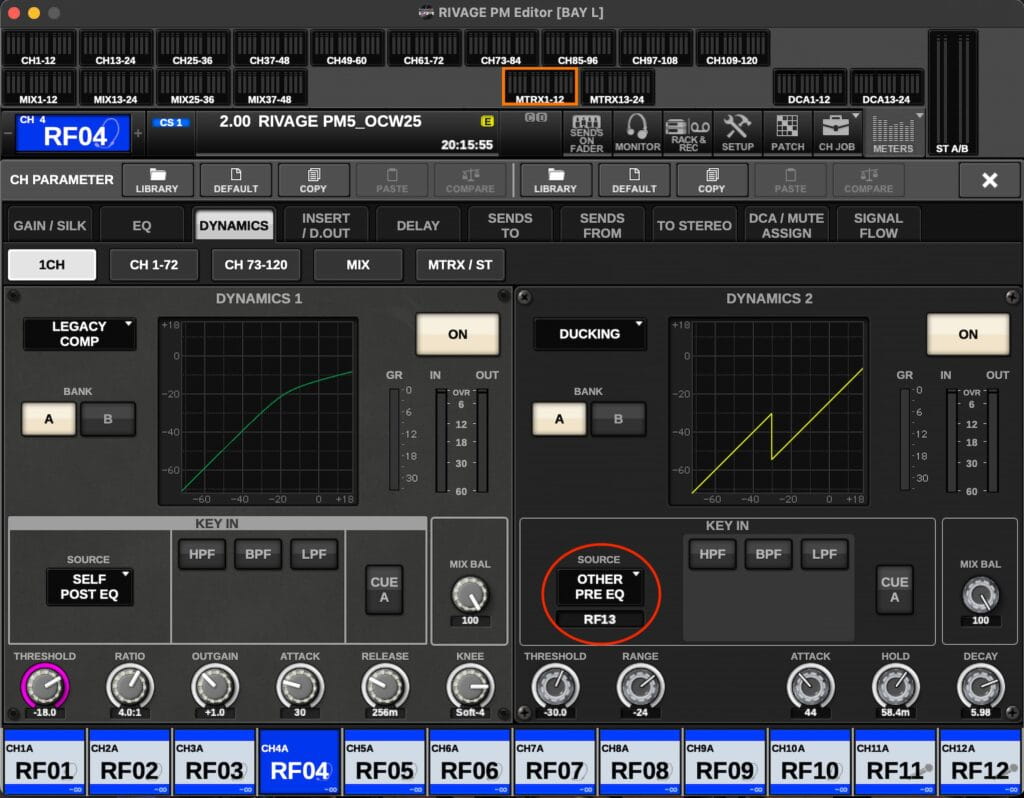
Yamaha Rivage, ducking reference
As the East stage wrapped, the West stage kicked off instantly — about fifteen minutes per side, including competition, interview, and audience Q&A.
Multiply that by 20 back-to-back rounds and you’ll get the idea: a long day of coffee, caffeine, and continuous mixing.
Backstage Brewing
Meanwhile, behind the scenes, Brent Dunn from DSP Live was keeping the engine running. In addition to setting up all the Axient mics and ears, he helped oversee the build of the Dante infrastructure that connected every part of the system — all while bringing order to the extremely busy backstage environment.
Backstage was divided into two zones — Backstage Audio, which housed the racks and broadcast console, and the Green Room, located a few hundred feet away, where all the talent was mic’d. To maintain solid RF coverage between these areas, Brent deployed a Shure AD8C antenna combiner so that Zach and I could PFL talent with confidence, no matter where they were.
He also enlisted support from the RRS staff to help coordinate the massive number of mic-ups and quick de-mics required to keep pace with the rapid show flow. Both Brent and Zach QC’d each barista’s IFBs before they hit the stage to ensure everyone was hearing exactly what they needed — a small step that made a big difference in maintaining consistency across so many fast-moving rounds.
When the Grounds Settled
When the final shot was poured and the applause faded, I realized this was one of the most unique, technically demanding, and downright fun mixes I’ve done. Between the caffeine-driven crowd, the bilingual coordination, and the endless dance of ducking and routing, it was the perfect reminder that live audio is equal parts science and art — just like a perfect cup of coffee.
